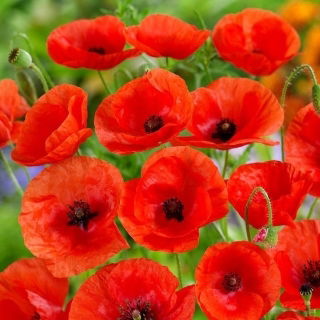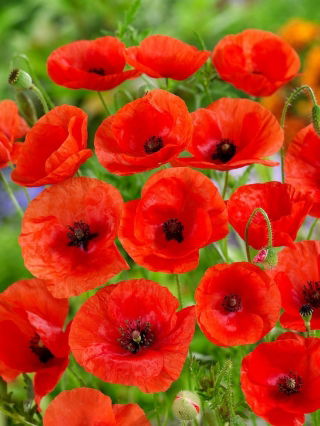- US Dollars ($)
- Euro (€)
- GB Pound (£)
- Chinese Yuan (元)
- Swedish krona (kr)
- Russian ruble (₽)
- Hong Kong dollar (HK$)
- Norwegian krone (kr)
- Indian rupee (₹)
- New Taiwan dollar (NT$)
- Danish krone (kr)
- Hungarian forint (Ft)
- Saudi riyal (SR)
- Bulgarian lev (лв)
- Czech koruna (Kč)
- Israeli shekel (₪)
- Indonesian rupiah (Rp)
- Japanese yen (¥)
- Korean won (₩)
- Malaysian ringgit (RM)
- Romanian leu (leu)
- Swiss franc (Fr.)
- Serbian dinar (din)
- Vietnamese đồng (₫)
- Ukrainian hryvnia (₴)
- Turkish lira (₺)
- Thai baht (฿)
- CAD Dollars ($)
- English
- French - Français
- Spanish - Español
- Italian - Italiano
- Swedish - Svenska
- Danish - Dansk
- Nederlands
- Estonian - Eesti keel
- Finnish - Suomalainen
- Hungarian - Magyar
- Latvian - Latviešu valoda
- Lithuanian - Lietuvių
- Portuguese - Português
- Bulgarian - български
- Czech - Čeština
- Greek - Ελληνικά
- Croatian - Hrvatski
- Romanian - Română
- Slovak - Slovák
- Slovenian - Slovenščina
- Categories
-
Seeds
-
Vegetable Seeds
-
Flower Seeds
-
- Ageratum, Flossflower seeds
- Alyssum seeds
- Amaranth Seeds
- Aquilegia, Columbine seeds
- Aster seeds
- Aubrieta Seeds
- Begonia seeds
- Bellis perennis, Daisy seeds
- Californian Poppy Seeds
- Campanula, Bellflower seeds
- Celosia, Cocksbomb seeds
- Centaurea, Cornflower seeds
- Chrysanthemum, Painted Daisy seeds
- Coleus seeds
- Convolvulus seeds
- Coreopsis seeds
- Cosmos seeds
-
- Datura seeds
- Dianthus, Carnation seeds
- Echinacea, Coneflower seeds
- Flower seed mixtures
- Forget me not seeds
- Foxglove seeds
- Gaillardia Seeds
- Gazania seeds
- Geranium, Pelargonium seeds
- Godetia seeds
- Gourd, Ornamental squash seeds
- Gypsophila, Baby's Breath seeds
- Hollyhock seeds
- Impatiens seeds
- Ipomoea, Morning glory seeds
- Calabash, Bottle Gourd seeds
- Larkspur, Delphinium seeds
-
- Limonium, Statice seeds
- Lobelia seeds
- Lupin, Lupine seeds
- Lychnis, Catchfly seeds
- Mallow Seeds
- Marigold, Tagetes seeds
- Milkweed Seeds
- Nasturtium seeds
- Nemesia seeds
- Nepeta, catmint seeds
- Nicotiana, Ornamental Tobacco seeds
- Nigella, Love in a mist seeds
- Pansy seeds
- Petunia and Surfinia seeds
- Phlox seeds
- Poppy seeds
- Primula, Primrose seeds
-
- Red Valerian, Centranthus Seeds
- Ricinus, Castor bean seeds
- Runner bean seeds
- Safflower seeds
- Salvia, Ornamental sage seeds
- Snapdragon Seeds
- Stock seeds
- Strawflower, Golden everlasting seeds
- Sunflower seeds
- Sweet pea seeds
- Tunbergia, Black-eyed Susan Vine seeds
- Verbascum, Mullein seeds
- Verbena seeds
- Veronica, Speedwell seeds
- Viola, Violet seeds
- Zinnia seeds
-
- Herb Seeds
- Sprouting Seeds
-
Flower Bulbs
-
Garden Equipment
-
At home
- Around home
-
Fertilizers
-
- All-purpose fertilizers
- Autumn and winter fertilizers
- Blueberry fertilizers
- Boxwood fertilizers
- Bulb plants' fertilizers
- Grass and lawn fertilizers
- Citrus plant fertilizers
- Compost
- Conifer fertilizers
- Dolomite and lime fertilizers
- Dry powder fertilizers
- Fertilizers for balcony and terrace plants
- Fertilizers for moss-infected lawns
- Fertilizers in pump sprayers
-
- Fertilizers in watering cans
- Fertilizers sticks
- Fertilizers with leaf shine
- Flowering plant fertilizers
- Fruit fertilizers
- Fruit tree fertilizers
- Garden plant fertilizers
- Gel fertilizers
- Geranium fertilizers
- Green plant fertilizers
- Herb fertilizers
- Home plant fertilizers
- Hydrangea fertilizers
- Lavender fertilizers
-
Common Poppy - Papaver rhoeas - 100 g - Classic Choice for Wildflower Meadows - Fresh Seeds
The common poppy – classic (Papaver rhoeas) is a striking annual plant that brings intense color and nostalgic charm to any garden. Its large, single flowers in vivid red are a true highlight of flower beds, borders, rock gardens, or wildflower meadows. Thanks to its versatility, it also performs well as a cut flower, adding elegance to indoor spaces. This plant grows up to about 40 cm tall and forms thin, hairy stems that sway gently in the wind, catching the eye of every passerby.
Sowing
Common poppy seeds should be sown directly into the soil, without the need for prior seedling preparation. This makes the cultivation process simple and low-effort. It’s important to spread the seeds evenly over the surface to ensure even plant development.
Sowing Depth
The optimal sowing depth for poppy seeds is about 0.5 cm. This depth allows quick germination and provides young plants with stability and access to light. Avoid sowing too deep, which can hinder emergence through the soil layer.
Sowing Period
When should poppy seeds be sown outdoors? The best time is from April to May, when the soil is already warm, promoting fast germination and strong growth. Plants sown in this period will bloom in summer with vibrant colors.
Spacing
To support healthy growth, maintain spacing of 25x25 cm between plants. This distance allows free development and good air circulation, which is essential for plant health. Proper spacing also reduces the risk of fungal diseases and encourages lush blooming.
Site
Poppies thrive in sunny spots with well-drained, moderately fertile soil. Avoid overly moist areas to prevent root diseases. Thanks to its minimal requirements, the common poppy is ideal even for beginner gardeners.
Cultivation
This plant is low-maintenance and perfect for those who prefer easy gardening. Regular watering, especially during dry periods, supports good growth. Removing faded flowers extends the blooming period and enhances garden aesthetics. Weeding around the plants helps keep them healthy.
Height
Common poppies grow up to 40 cm tall, making them suitable for many garden designs. They don’t overshadow other plants but stand out with their vivid red blooms.
Blooming Time
Poppies bloom from July to August, filling the garden with intense red color. This is when the flowers look their best. Regular deadheading can extend blooming and enhance the display.
Uses
Common poppies are perfect for borders, beds, rock gardens, and wildflower meadows. Their vivid color and delicate form are ideal for natural flower compositions. They also work well as short-lived cut flowers, bringing freshness and color indoors. Their versatility allows them to be used in many types of garden arrangements.
Disease Resistance
Common poppies show good resistance to most diseases, making them easy to grow. Regular weeding and proper soil conditions help prevent disease. The plant is also resistant to most pests, making it a great choice for any gardener.
Good to Know
Poppies attract not only attention but also bees and butterflies, making them beneficial for garden ecosystems. Their vivid color makes them ideal for focal points in the garden. Though annual, they self-seed and may return for years to come.
Why buy from Garden Seeds Market?
Buying from Garden Seeds Market guarantees quality and reliability. Our common poppy seeds come from tested batches, ensuring high germination and performance. Take advantage of great prices and fast shipping to enjoy your garden sooner. Positive customer reviews confirm that Garden Seeds Market is the right choice for all gardening enthusiasts.
This package contains 100 grams of seeds. Growing instructions and expiration date are included on the label.
New


My account
Store
Customer information
Information

© -2025 Gardenseedsmarket.




